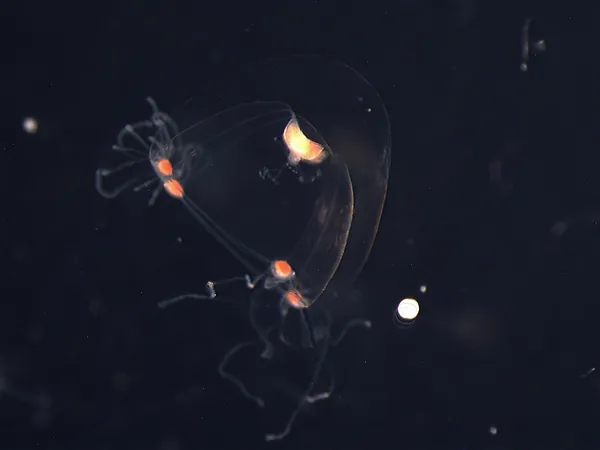
Breakthrough in Superconductivity: First Direct Evidence Found in Hydrogen Sulphides!
2025-05-12
Author: Wei Ling
A Groundbreaking Discovery in Superconductivity
Excitement surges in the realm of physics as researchers in Germany unveil the first direct measurement of a superconducting gap in a hydride sulphide material. This remarkable discovery serves as ‘smoking gun’ evidence for superconductivity in these compounds, while confirming the role of phonons in facilitating electron pairing—the heart of superconductivity.
Understanding Superconductors
Superconductors are marvels of materials science, allowing electricity to flow without any resistance. However, traditional superconductors require extremely low temperatures to function. The earliest known superconductor, mercury, operates at just 4.2 K! The quest for materials that can perform at higher temperatures is a tantalizing prospect—the holy grail being a room-temperature superconductor that could revolutionize electrical systems.
The Superhydride Revolution
The groundbreaking 1980s and 1990s saw the emergence of high-temperature copper oxide superconductors with transition temperatures ranging from 30 to 133 K. Fast forward to 2015, and we witnessed the dramatic rise of sulphide material H3S, boasting a critical temperature of 203 K at pressures of 150 GPa—a record-breaking feat!
The momentum built further in 2019 when lanthanum decahydride (LaH10) shattered expectations with a staggering Tc of 250-260 K, also under extreme pressures. By 2021, cerium hydrides joined the race, revealing high-temperature superconductivity at more manageable pressures of around 80 GPa.
Decoding the Mechanism of Superhydride Superconductivity
Despite headlines and excitement, one crucial question lingered: What underpins superhydride superconductivity? Bardeen–Cooper–Schrieffer (BCS) theory explains that superconductivity results from electron pairs, known as Cooper pairs, that glide through a material without scattering. A significant marker of this phenomenon is an energy gap near the Fermi level, which signals the presence of Cooper pairs.
However, measuring this gap in superhydrides poses a monumental challenge due to the extreme pressures they require. Conventional methods like scanning tunneling spectroscopy and angle-resolved photoemission spectroscopy fell short. Thus, an innovative solution was essential.
Innovative Techniques: Planar Electron Tunneling Spectroscopy
Enter the groundbreaking work from Germany's Max Planck Institute for Chemistry! A team led by audacious researchers engineered a novel method: planar electron tunneling spectroscopy, resilient enough to function under intense pressure conditions. This involved creating ultra-pure planar tunnel junctions of H3S and its deuterated counterpart D3S at pressures exceeding 100 GPa.
Utilizing laser heating, they crafted junctions composed of tantalum metal, a tantalum pentoxide barrier, and the superconductors. By analyzing the differential conductance across these junctions, the researchers unraveled the electron state density in H3S and D3S near the Fermi level.
The Stunning Results
The tunneling spectra revealed fully open superconducting gaps of 60 meV for H3S and 44 meV for D3S. Team member Feng Du explained that the smaller gap in D3S aligns with the hypothesis that electron-phonon interactions drive superconductivity in H3S, reinforcing earlier predictions and opening exciting avenues for future research!
This breakthrough not only propels our understanding of superconductivity but also lays the groundwork for the next wave of revolutionizing materials that could change our electrical world.


 Brasil (PT)
Brasil (PT)
 Canada (EN)
Canada (EN)
 Chile (ES)
Chile (ES)
 Česko (CS)
Česko (CS)
 대한민국 (KO)
대한민국 (KO)
 España (ES)
España (ES)
 France (FR)
France (FR)
 Hong Kong (EN)
Hong Kong (EN)
 Italia (IT)
Italia (IT)
 日本 (JA)
日本 (JA)
 Magyarország (HU)
Magyarország (HU)
 Norge (NO)
Norge (NO)
 Polska (PL)
Polska (PL)
 Schweiz (DE)
Schweiz (DE)
 Singapore (EN)
Singapore (EN)
 Sverige (SV)
Sverige (SV)
 Suomi (FI)
Suomi (FI)
 Türkiye (TR)
Türkiye (TR)
 الإمارات العربية المتحدة (AR)
الإمارات العربية المتحدة (AR)